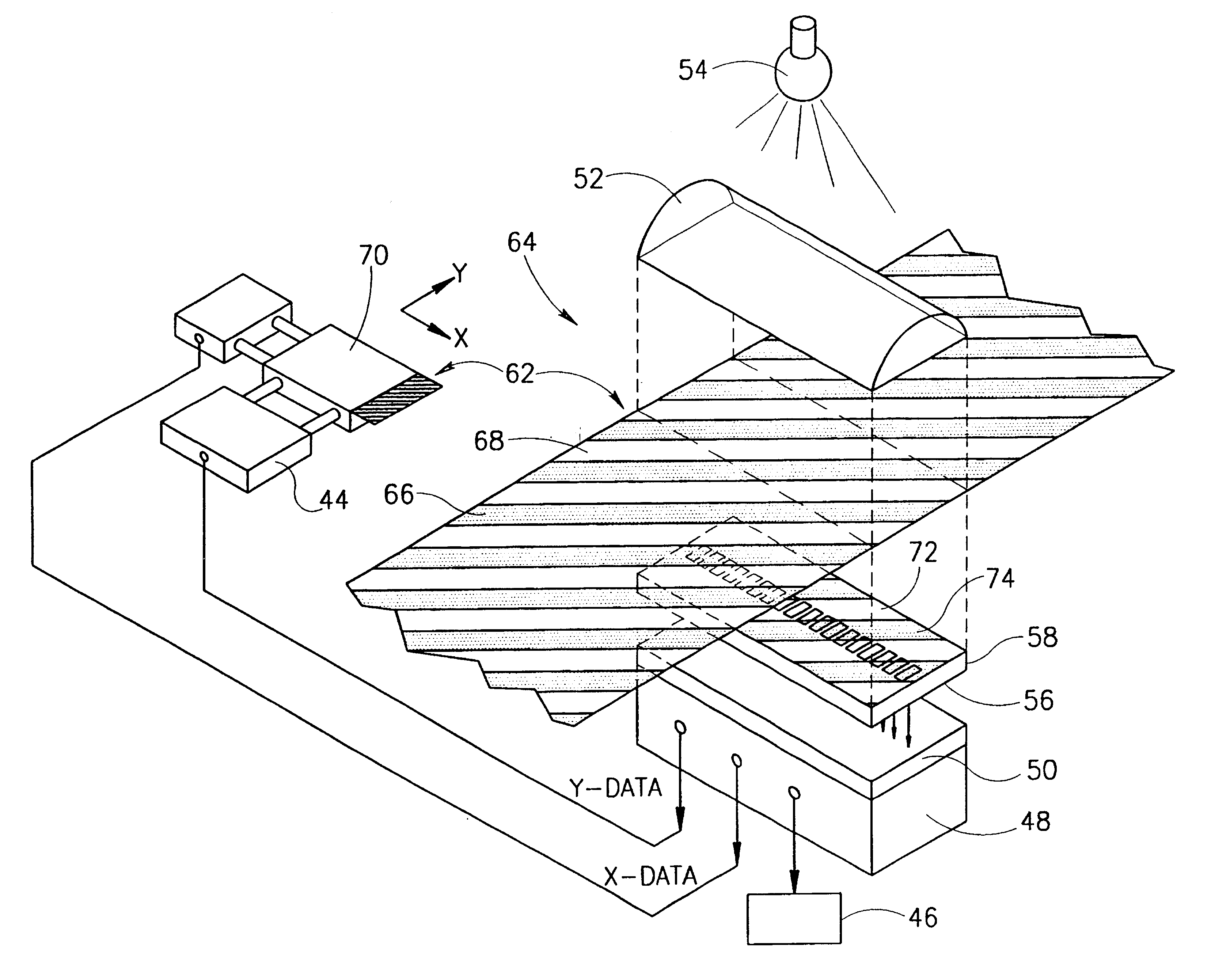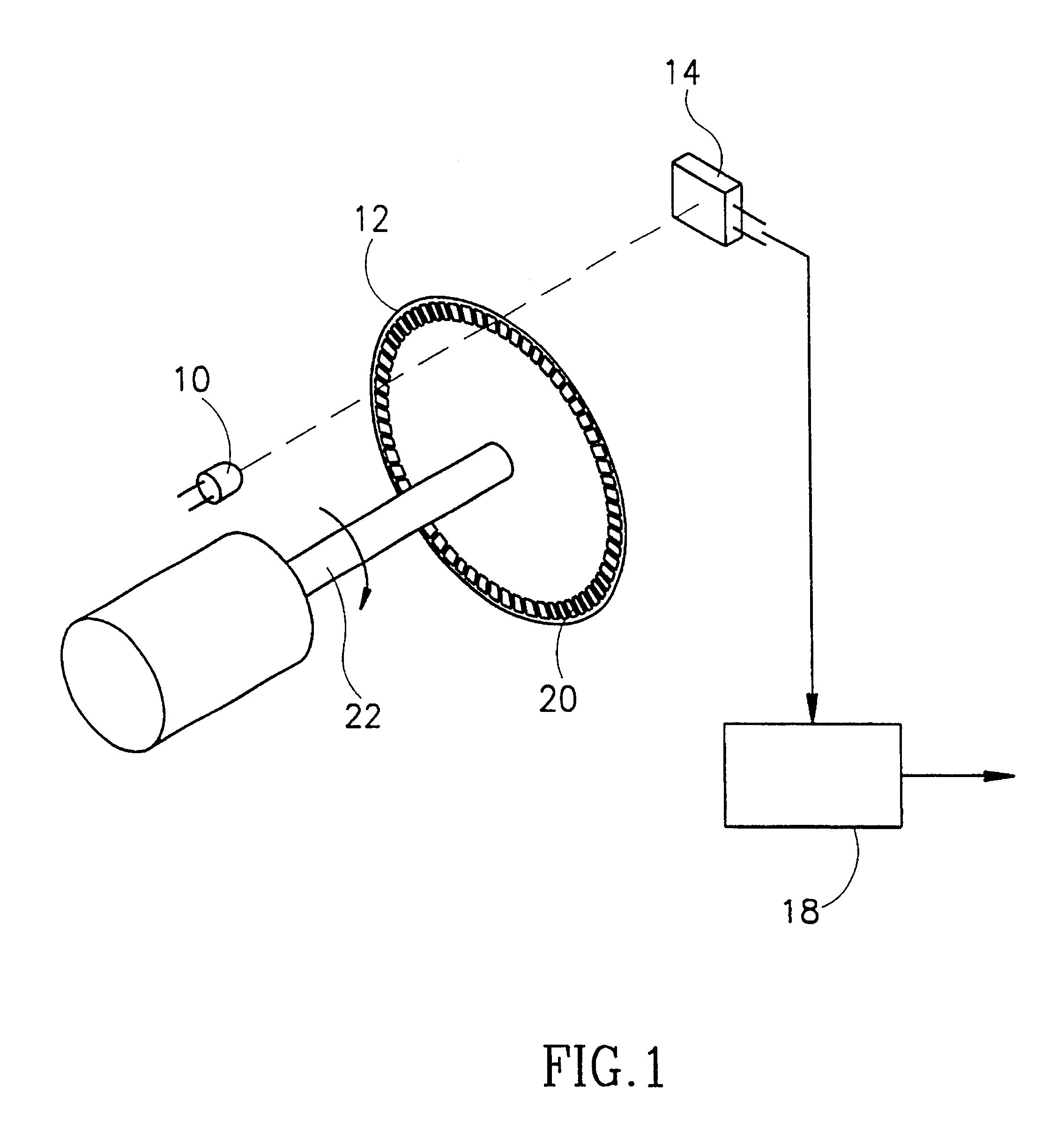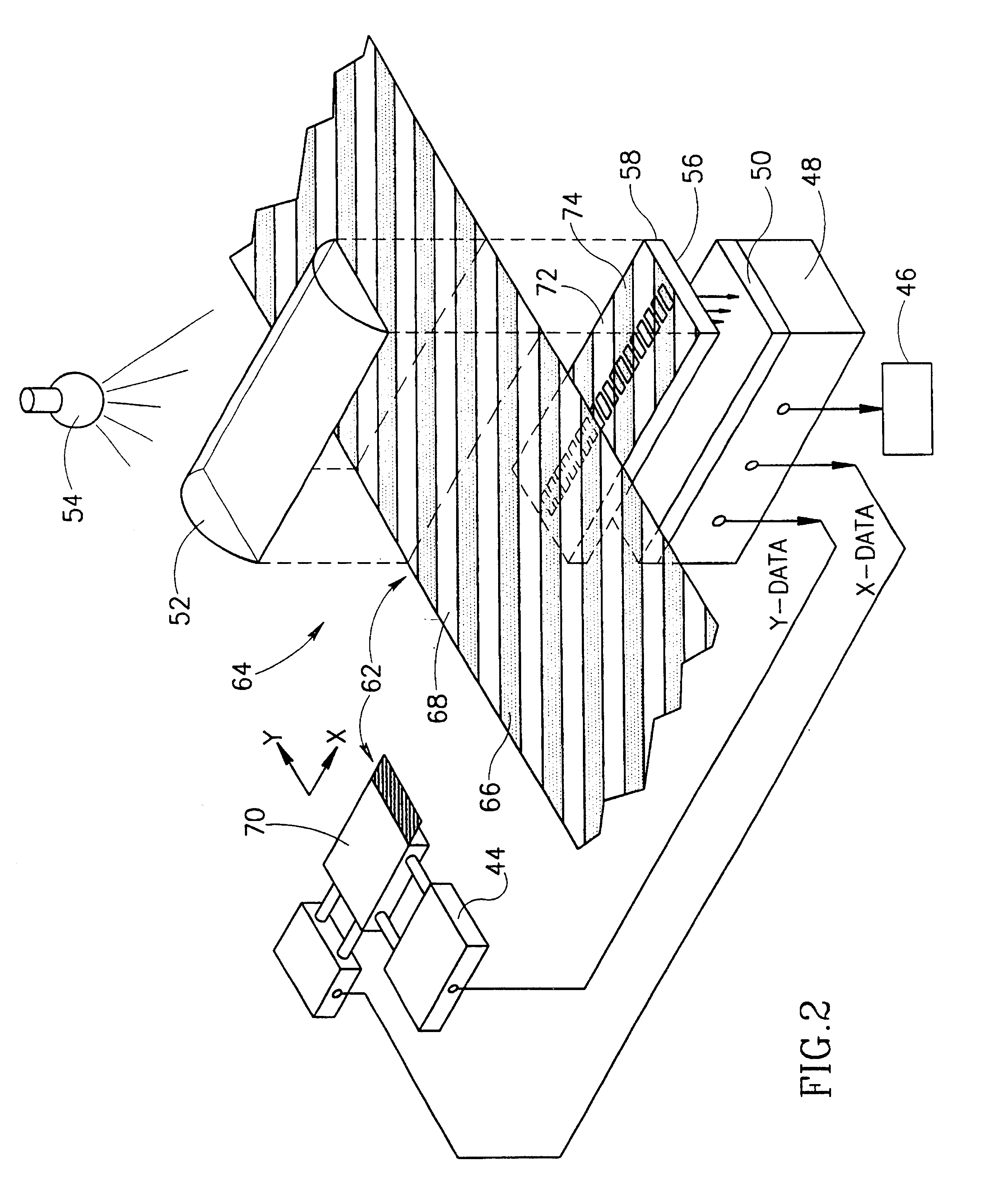Methods and apparatus for position determination
- Summary
- Abstract
- Description
- Claims
- Application Information
AI Technical Summary
Benefits of technology
Problems solved by technology
Method used
Image
Examples
Embodiment Construction
FIG. 2 illustrates an accurate position-determining apparatus 64 for determining the linear position of a movable object 70, in accordance with a preferred embodiment of the invention. Apparatus 64 utilizes a mask 62 which is mounted on object 70. The mask is comprised of parallel diagonal strips which are alternately transparent 68 and opaque 66 to light rays which originate in a lamp 54. The light rays are preferably collimated to the mask by means of a lens 52. Alternatively, a laser source can be used. The left portion of FIG. 2 shows moving object 70, having mask 62 mounted thereon. The right portion of FIG. 2 shows a greatly enlarged illustration of mask 62 together with additional apparatus associated with the mask not shown on the left portion of FIG. 2. A similar method of illustrating a complete apparatus is used in FIG. 8.
Light passing through the transparent strips in mask 62 illuminates the surface of a linear array 58 of spaced light detectors 56 (a linear array of CCD...
PUM
 Login to View More
Login to View More Abstract
Description
Claims
Application Information
 Login to View More
Login to View More - R&D
- Intellectual Property
- Life Sciences
- Materials
- Tech Scout
- Unparalleled Data Quality
- Higher Quality Content
- 60% Fewer Hallucinations
Browse by: Latest US Patents, China's latest patents, Technical Efficacy Thesaurus, Application Domain, Technology Topic, Popular Technical Reports.
© 2025 PatSnap. All rights reserved.Legal|Privacy policy|Modern Slavery Act Transparency Statement|Sitemap|About US| Contact US: help@patsnap.com



